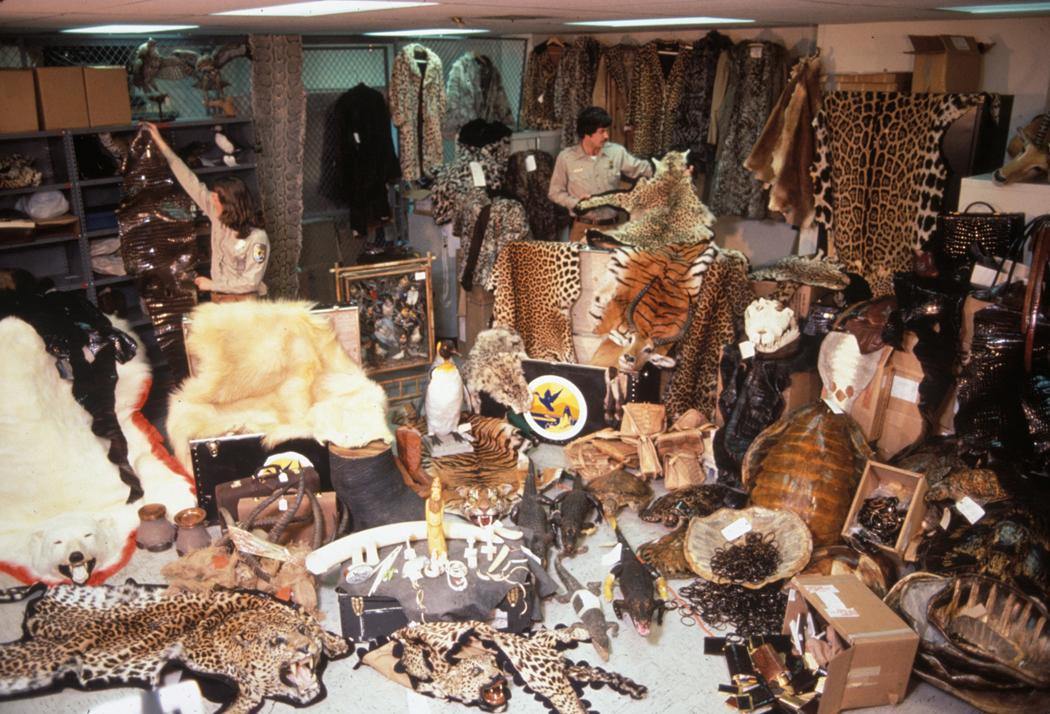Wildlife Trafficking - Things You need to Know
Posted on October 13th, 2020

The world is dealing with an unprecedented spike in illegal wildlife trade, threatening to overturn decades of conservation gains.
Wildlife crime is a big business. Run by dangerous international networks, wildlife and animal parts are trafficked much like illegal drugs and arms. By its very nature, it is almost impossible to obtain reliable figures for the value of the illegal wildlife trade. Experts state that the wildlife trade monitoring network, estimate that it runs into USD 7–23 billions.
Some examples of illegal wildlife trade are well known, such as poaching of elephants for ivory and tigers for their skins and bones. However, countless other species are similarly overexploited, from marine turtles to timber trees directly threatening the survival of many species in the wild. The existence of illegal trade is also worrying because it undermines countries' efforts to protect their natural resources.
Stamping out wildlife crime should be a priority because it’s the largest direct threat to the future of many of the world’s most threatened species. It is second only to habitat destruction in overall threats against species survival.
Causes
Growing Human Population
As human populations have grown, so has the demand for wildlife. People in many countries are accustomed to a lifestyle which fuels demand for wildlife. They expect access to a variety of seafoods, leather goods, timbers, medicinal ingredients and textiles. At the other end, extreme poverty means some people see wildlife as valuable barter for trade.
High Profit Margins
Illegal wildlife trade is driven by high profit margins and, in many cases, the high prices paid for rare species. Vulnerable wild animals are pushed further to the edge of extinction when nature can’t replenish their stocks to keep up with the rate of human consumption.

Demand Drives Crime
Rhino horn, elephant ivory and tiger products continue to command high prices among consumers, especially in Asia. In Vietnam, the recent myth that rhino horn can cure cancer has led to massive poaching in South Africa and pushed the price of rhino horn to rival gold.
Gaps In Protection
Corruption, toothless laws, weak judicial systems and light sentences allow criminal networks to keep plundering wildlife with little regard to consequences. These factors make illegal wildlife trade a low risk business with high returns. The poachers—often poor locals—are the usually the only ones caught, leaving the real masterminds and their network safe and operational with the ability to strike again.
Impacts
This exploitation should concern us all...
because it harms the balance of nature & also, HUMAN LIVLIHOODS.
Wildlife is vital to the lives of a high proportion of the world's population, often the poorest. Some rural households depend on local wild animals for their meat protein and on local trees for fuel, many people in the developing world depend entirely on the continued availability of local wildlife resources.
In addition to the impact on human livelihoods caused by the over-harvesting of animals and plants is the harm caused by overexploitation of species to the living planet in a wider way. For example, overfishing does not only affect individual fishing communities and threaten certain fish species, but causes imbalances in the whole marine system.

Incidental killing of non-target species, such as dolphins and seabirds, when they are caught in fishing gear. It is estimated that over a quarter of the global marine fisheries catch is incidental, unwanted, and discarded. Incidental killing of animals also happens on land when crude traps are set, for example, Explosive filled pineapples eaten by elephants. These cause damage and death to a variety of animals besides the intended ones.
India's Position In Wildlife Trafficking
India is only 2.4 per cent of world's land area, but contributes about 8 per cent of known global wildlife, including over 45,000 species of plants and 91,000 species of animals.
India has a strong legal and policy framework to regulate and restrict wildlife trade. Trade in over 1800 species of wild animals, plants and their derivative are prohibited under the Wildlife (Protection) Act, 1972.
The existing wildlife law has provisions of penalties ranging from ₹ 500-25,000 for violation of the law. To deter poachers, the new drafted law (yet to be amended) recommends higher penalties ranging from ₹ 5,000 to ₹ 50 lakh.
In India like many other countries, the problem is not of the laws but that these may be poorly communicated and just as poorly implemented and enforced. Often, positive efforts to address wildlife trade concerns are undermined by lack of political will and governance failures.
What can we do?
As human life depends on the existence of a functioning planet Earth, careful and thoughtful use of wildlife species and their habitats is required to avoid not only extinctions, but serious disturbances to the complex web of life.
Ask before you buy!
If you're unsure where something like jewelry or clothing comes from, simply ask. Ask the vendor what it's made of, where it's from, and if its country of origin allows its sale.
Choose sustainable, eco-friendly pets
Many animals are taken from their natural habitats in large numbers to be sold in pet stores. This can be harmful to the animals' wild populations, as well as having being significantly traumatic for the animal itself.
Pledge your support
There's strength in numbers. File petitions and stand with organizations which urge governments to do more to stop wildlife crime in their countries.

Report any illegal wildlife trade
The world is much smaller thanks to the internet and now it's easier than ever to report illegal wildlife trade when you see it.
Spreading Awareness
Educate your family and friends on wildlife protection laws in your country. Wildlife protection laws exist and are enforced in many countries like India.


